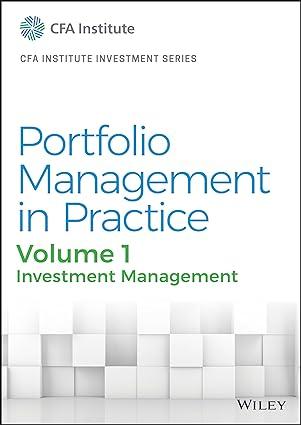The analysis performed by Sardar on the Purity Fund can be best described as being based on:
Question:
The analysis performed by Sardar on the Purity Fund can be best described as being based on:
A. a holdings-based approach.
B. manager self-identification.
C. a returns-based style analysis.
Jack Dewey is managing partner of DC&H, an investment management firm, and Supriya Sardar is an equity analyst with the firm. Dewey recently took over management of the firm’s Purity Fund. He is developing a fundamental active investment process for managing this fund that emphasizes financial strength and demonstrated profitability of portfolio companies. At his previous employer, Dewey managed a fund for which his investment process involved taking active exposures in sectors based on the macroeconomic environment and demographic trends.
Dewey and Sardar meet to discuss developing a fundamental active investment process for the Purity Fund. They start by defining the investment universe and market opportunity for the fund, and then they pre-screen the universe to obtain a manageable set of securities for further, more detailed analysis. Next, Dewey notes that industry and competitive analysis of the list of securities must be performed. He then asks Sardar to recommend the next step in development of the fundamental active management process.
During the next few months, Dewey rebalances the Purity Fund to reflect his fundamental active investment process. Dewey and Sardar meet again to discuss potential new investment opportunities for the fund. Sardar recommends the purchase of AZ Industrial, which she believes is trading below its intrinsic value, despite its high price-to-book value (P/B) relative to the industry average.
Dewey asks Sardar to perform a bottom-up style analysis of the Purity Fund based on the aggregation of attributes from individual stocks in the portfolio. Dewey plans to include the results of this style analysis in a profile he is preparing for the fund.
Step by Step Answer:






